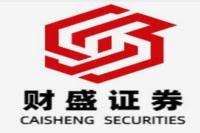Unlocking China's Economic Engine: A Deep Dive into Supply-Demand Synergy
Meta Description: Explore China's economic strategy focusing on supply-side structural reforms and expanding domestic demand to achieve a smooth economic cycle. Learn about the challenges, solutions, and the future of China's economic growth. Keywords: Supply-Side Structural Reform, Domestic Demand, Economic Cycle, China Economy, Macroeconomic Policy
This isn't just another economic report; it's a journey into the heart of China's ambitious economic plan. Imagine a finely tuned engine, where every component works in perfect harmony. That's the goal: a smoothly functioning economic circulatory system, powered by the dynamic interplay of supply and demand. But the reality is more complex, a bit like trying to navigate a bustling city during rush hour – traffic jams, unexpected detours, and occasional gridlock. China’s path to sustainable growth requires addressing these bottlenecks, skillfully balancing the forces of supply and demand to create a robust and resilient economy. We'll delve deep into the strategies being employed, analyzing the challenges and opportunities, and ultimately exploring how this approach shapes not only China’s future, but also the global economic landscape. Forget dry statistics; we'll uncover the human element, the real-world impact of these policies on individuals, businesses, and the nation as a whole. Prepare to be amazed by the scale and complexity of this economic juggernaut and the ingenious solutions being implemented to keep it running smoothly. This isn't just about numbers; it's about people, innovation, and the relentless pursuit of progress. Let's get started!
Supply-Side Structural Reform: The Foundation of a Thriving Economy
The recent Central Economic Work Conference highlighted a crucial point: a healthy economy hinges on a finely balanced relationship between supply and demand. This isn’t some abstract economic theory; it's the bedrock of China's current economic strategy. The emphasis is on supply-side structural reform (SSR), a multifaceted approach aimed at improving the quality and efficiency of the nation's production. Think of it as upgrading the engine's components for optimal performance.
This isn't simply about producing more; it's about producing better. SSR focuses on several key areas:
- Improving Investment Efficiency: Money isn't just thrown at projects; it's strategically allocated to areas with high growth potential and strong alignment with consumer demands. This is crucial for avoiding wasteful spending and maximizing the impact of economic stimulus.
- Optimizing Industrial Structure: Outdated, inefficient industries are gradually phased out, making way for more innovative and technologically advanced sectors. This isn't painless, but it's essential for long-term economic health. Think of it as a necessary pruning to ensure the healthy growth of the economic tree.
- Boosting Productivity and Competitiveness: SSR aims to enhance the competitiveness of Chinese industries on a global scale by focusing on quality, innovation, and efficiency. This means moving beyond simply being a low-cost producer and becoming a leader in innovation and cutting-edge technology. It’s a strategic shift from quantity to quality.
- Accelerating the Development of New Industries: The focus is on fostering the growth of emerging sectors, like green technology, digital economy and high-tech manufacturing. These sectors are not only drivers of economic growth but also crucial for building a sustainable future.
The ultimate aim? To create a supply of goods and services that perfectly matches the evolving needs and desires of the Chinese market and, increasingly, the global market. This isn't just economic theory; it's a pragmatic, results-oriented approach designed to position China for continued economic success.
Expanding Domestic Demand: The Engine of Growth
While supply-side reforms lay the foundation, expanding domestic demand is the engine that drives growth. The government's strategy is ambitious: to make domestic consumption the primary engine of economic expansion. This is a significant shift away from reliance on export-led growth, a move necessitated by increasing global uncertainties and the need for a more self-reliant economy.
This involves addressing several key challenges:
- Bridging the Gap Between Production and Consumption: This requires a concerted effort to ensure that the goods and services produced meet the actual needs and preferences of Chinese consumers. Market research, consumer feedback, and agile production processes are key here.
- Improving Income Distribution: A more equitable distribution of income is crucial for boosting consumption. Measures to increase wages, improve social safety nets, and reduce income inequality are all part of the plan. “A rising tide lifts all boats,” is the underlying principle.
- Strengthening Consumer Confidence: Building trust in the economy and creating a positive outlook for the future is important for encouraging spending. This involves clear communication of economic policies, transparency, and a consistent effort to maintain economic stability.
- Improving Infrastructure and Services: Investments in infrastructure, particularly transportation, logistics, and digital connectivity, are vital for facilitating the smooth flow of goods and services to consumers.
The government is actively working to enhance consumer spending through various initiatives, including tax cuts, subsidies, and improvements to social welfare programs. However, it's a long-term project, requiring sustained effort and a keen understanding of consumer behavior and evolving preferences.
The Interplay of Supply and Demand: A Delicate Balancing Act
The success of China’s economic strategy relies on the careful balancing act between supply-side reforms and expanding domestic demand. It's not a simple either/or situation; it's a synergistic relationship where one reinforces the other. Imagine a perfectly choreographed dance; both partners must work in harmony to achieve a graceful and compelling performance.
- High-Quality Supply Creates New Demand: When businesses invest in creating high-quality goods and services that meet consumer needs, this, in turn, stimulates demand. It's a virtuous cycle, where improved supply leads to greater consumption.
- Strong Demand Drives Supply-Side Improvements: When consumer demand is strong, businesses respond by investing in capacity expansion, technological innovation, and improved efficiency. This leads to a more robust and responsive supply side.
The government plays a crucial role in this delicate balancing act through strategic policy interventions. This includes targeted fiscal and monetary policies, infrastructure investment, and regulatory reforms designed to encourage both supply-side improvements and demand growth.
Frequently Asked Questions (FAQs)
Q1: What are the biggest challenges to achieving a smooth economic cycle in China?
A1: Major challenges include managing the transition from an export-led growth model to one driven by domestic demand, addressing income inequality, maintaining economic stability amidst global uncertainties, and efficiently allocating resources to support innovation and technological advancement.
Q2: How does China plan to address the issue of insufficient domestic demand?
A2: Through a multi-pronged approach including targeted fiscal and monetary policies, investment in infrastructure and services, initiatives to boost consumer confidence, measures to improve income distribution, and policies to stimulate consumption in key sectors.
Q3: What role does technological innovation play in China's economic strategy?
A3: Technological innovation is central, fueling both supply-side improvements and the creation of new industries and business models. It's crucial for enhancing productivity, competitiveness, and creating new opportunities for growth.
Q4: How does the government plan to ensure a balance between market forces and government intervention?
A4: The approach emphasizes the "deciding role" of the market while acknowledging the need for effective government intervention to address market failures, guide economic development, and ensure social stability. This involves careful policy design, efficient regulation, and effective communication with the private sector.
Q5: What are the potential risks associated with China's current economic strategy?
A5: Risks include potential asset bubbles arising from excessive stimulus, the impact of global economic slowdowns, challenges in managing structural reforms, and the need to resolve issues related to income inequality and regional disparities.
Q6: What are the long-term implications of China's current economic approach for the global economy?
A6: China's focus on domestic demand, technological innovation, and sustainable development has significant implications for global trade, investment, and economic growth. It could lead to a shift in global economic power dynamics and create new opportunities for international cooperation and competition.
Conclusion: A Path to Sustainable Growth
China's pursuit of a smoothly functioning economic cycle is an ambitious undertaking, requiring a delicate balance of supply-side reforms and the expansion of domestic demand. It’s a complex, dynamic process, fraught with challenges but also brimming with opportunities. The success of this strategy will not only shape China's economic future but also have significant repercussions for the global economy. The journey is ongoing, and the path forward demands continuous adaptation, innovation, and a keen understanding of the intricate interplay between supply and demand. The overarching goal, however, remains clear: to build a robust, resilient, and sustainable economy that benefits all citizens. The coming years will be pivotal in determining whether this ambitious vision becomes a reality.



